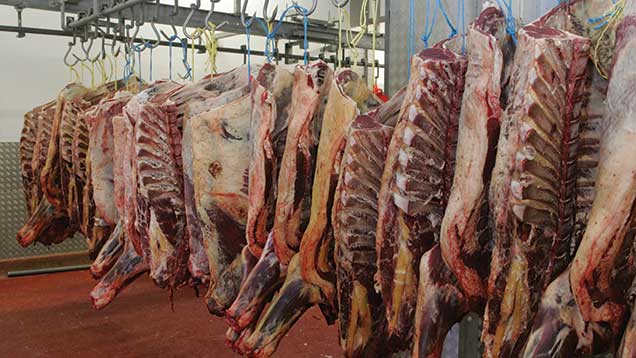Beef farmers face abattoir confusion, report finds
 © Tim Scrivener
© Tim Scrivener Farmers face a confusing lack of clarity and openness when selling cattle direct to abattoirs, a report has found.
A survey of producers’ dealings with a range of UK processors found terms and conditions of trade were often inconsistent and difficult to find.
The NFU’s deadweight transparency report discovered:
- Not all processors have payment grids and terms and conditions freely available online – it is often by request only.
- When information is online, it is sometimes behind a password gate.
- No official guidance exists for what different charges and deductions include and terminology varies between processors.
- Different plants under the same ownership use different charging structures.
- Some abattoirs charge insurance and others do not, while what it covers is regularly unclear.
- Few abattoirs freely share details of bonus schemes, which are often only open to current suppliers.
The beef sector’s processor code, which launched in February, requires firms to provide “open and clear information” on terms and conditions of trading to both new and existing suppliers.
See also: Beef code to set abattoir guidelines
NFU livestock board chairman Charles Sercombe said there should be less ambiguity when selling direct, allowing farmers to compare between processors and understand trading terms before they book in animals.
Recommendations from the union’s report include all abattoirs having to publish grids, terms and conditions, and itemised deductions on the internet.
It also suggested any charges linked to fluctuating markets, such as waste disposal, could also be built into the base price, while other charges, such as classification, could be fixed across the industry.
“There is still some issue on the processing industry being totally transparent about some of their processes, which in this day and age is counterproductive,” Mr Sercombe said.
“If they want to build up long-term relationships with their farmer-suppliers, it has to be built on transparency and trust.”
In the project, 27 farmers finishing cattle with an average herd size of 316 head completed a survey and handed over copies of kill sheets and payment grids.
The information gathered covered 70% of the biggest cattle-killing abattoirs in England and Wales.
The NFU’s survey was carried out in the autumn, before the beef sector’s voluntary code was introduced.
Only two major processors have not signed up to the guidelines, which were developed by the British Meat Processors Association and the NFU after last July’s beef crisis summit.
The BMPA said it would not comment until it had seen the full report.
